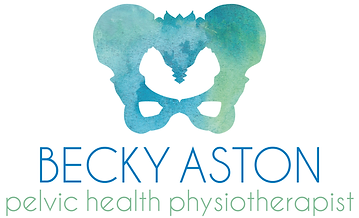Running after having a baby- when is it best to start?
- Becky Aston
- Feb 8, 2021
- 4 min read

Running is high impact. Forces of between 1.6 and 2.5 x our body weight are transmitted when your foot lands on the ground. Running is also a complex movement pattern which relies on the musculoskeletal system knowing what to do well in the right sequence. It’s a little bit like an orchestra - for the orchestra to sound good all the instruments need to know when to make a noise with the right intensity and correct notes. Running is similar, the timing, intensity and sequencing of the body needs to be working well in order for there to be no problems.
Prior to the 2019 return to running guidelines produced by Tom Goom, Grainne Donnelly and Emma Brockwell, there were very varying recommendations for post natal women wanting to start or return to running. We no longer have that issue. These three lovely people have trawled the research and talked to experts in the field of exercise science and pelvic health in order to produce this guidance.
The guidelines recommend that in the first 3 months post birth a low impact exercise programme is completed, following by a gradual return to running between 3 - 6 months.

Why?
Post natal women need adequate time to heal and regain strength particularly in the abdominal and pelvic floor regions
The Pelvic Floor Muscles which have been lengthened during pregnancy and vaginal delivery generally show improvements between 4-6 months after delivery
Following a C-section delivery, abdominal fascia regains 51-59% of its original tension by 6 weeks and 73-93% by 6-7 months post birth.
When should you not be running and seeking help instead ?
When you have urinary or faecal incontinence prior or during running
Pressure/bulge/dragging in the vagina- possibly suspecting you have a prolapse
Vaginal bleeding not related to menstrual cycle, during or after exercise
Lower back pain or pelvic girdle pain prior or during running
How to test whether you are ready to run
If you can do the following things with no incontinence, pain or heaviness and are at least 3 months post deliver then you might be nearly ready to run
Walking for 30 minutes
Single leg balance for 10 seconds
Single leg squat, 10 repetitions each side
Jog on the spot for 1 minute
10 forward bounds
10 hops on one leg each side
10 Single leg ‘running man’ opposite arm and hip flexion/extension (bent knee)
Now, here comes the bit where I say you need to see a Women’s Health Physiotherapist because there is guidance on pelvic floor muscle strength and anatomy that need to be checked before returning to running. During pregnancy and vaginal birth- the levator hiatus (opening of the vagina) becomes larger. There is a way of measuring this in order to understand the risk of pelvic organ prolapse. Note- this is the measurement that improves at 4 - 6 months and will be helped by Pelvic floor exercises.
When you see a Pelvic Health or Women’s health Physio, they assess pelvic floor muscle tone, activity, coordination, strength and fascial support and discuss a graded programme of getting your body ready to run.

Other things to consider
Sleep - Lack of sleep has been shown in many studies to increase the risk of injury and slow the reaction times down of the neuro musculoskeletal system. It’s a good idea to be flexible with your exercise programme, don’t choose the day you have a really bad nights sleep to run, do a lovely stretch session or go for a walk instead.
Nutrition and fluid is important. Make sure you have a balanced diet, rich in protein and fibre and ensure you are drinking enough water to hydrate. Best way to know if you are hydrated enough is the colour of your urine- it should be light yellow, similar to the colour of straw.
Good foot support is really important. Your foot is the first thing to hit the ground and has a direct effect on how your body above responds.
Good Bra support helps to support your chest and upper back. It’s a good idea to feed before you exercise so that they are less heavy.
Clothing considerations there are leggings and leggings, the more support the better I say. EVB are a brand that are made with the pelvic floor in mind. Designed by an engineer they have supportive panels in the gusset and lower abdominals.
Lower back and pelvic girdle pain, incontinence, pelvic organ prolapse and abdominal weakness after having a baby are very common. Exercise is important for physical and emotional wellbeing, so returning and managing to recover after pregnancy and birth in the correct way is vital. Our job and all of those who work with women having babies is to enable women to exercise confidently with their bodies. This cannot be rushed and just because you are 6 months post natal doesn’t mean you are ready to run- you need to have done the pre running training first.
The post natal period should be considered as a progressive return to fitness whether running is your goal or not. Huge changes to your body happen during pregnancy and delivery, so its important to connect back with your body correctly and not push too hard too soon.
Good Luck!
Becky xxx






Comments